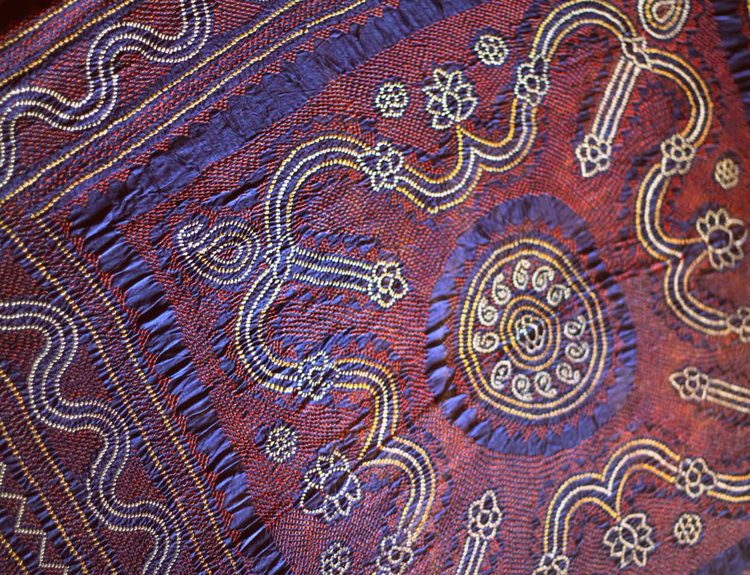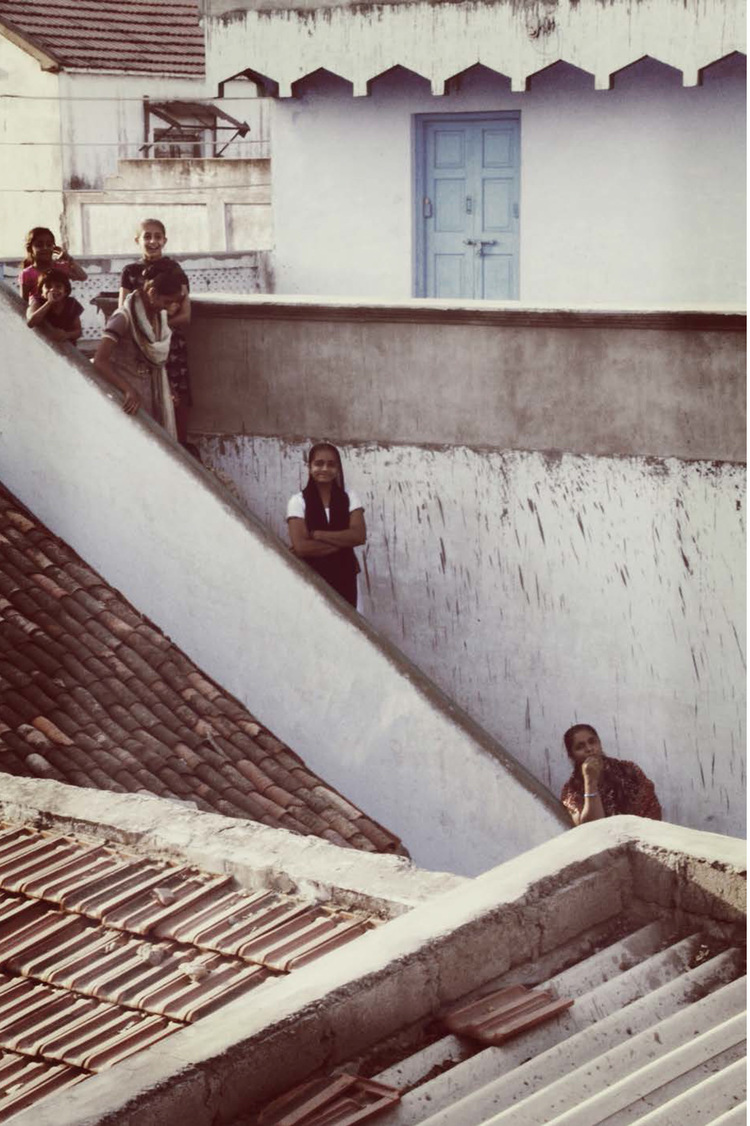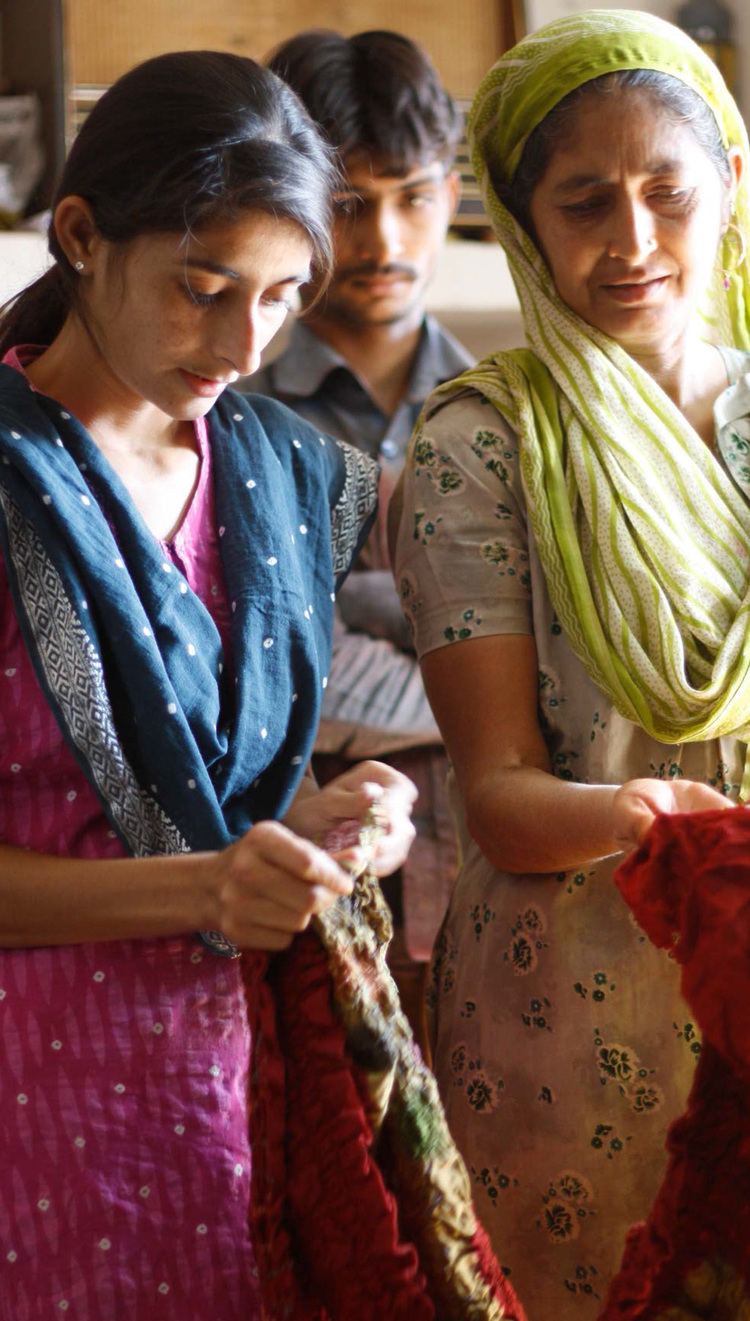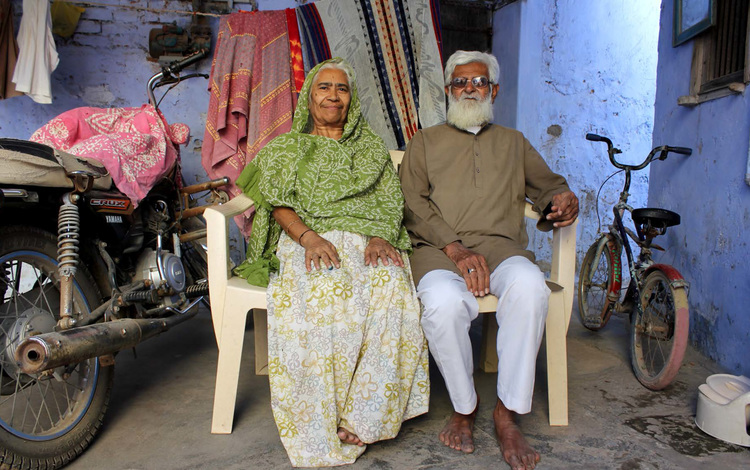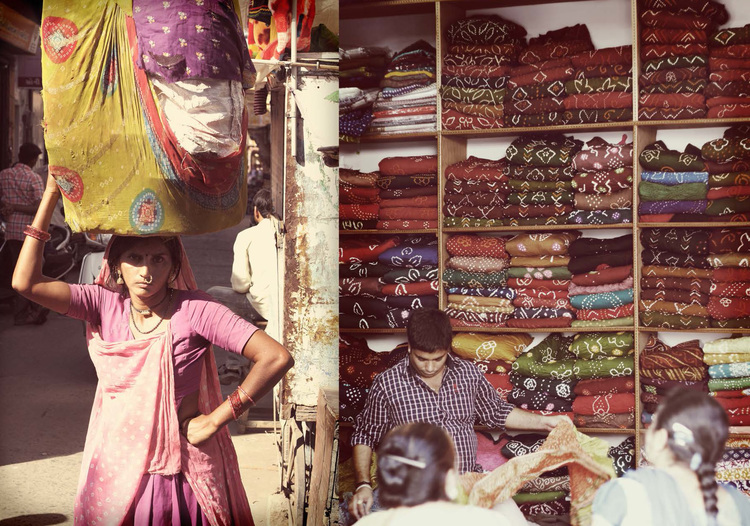Nakhatrana
Nakhatrana is home to many pastoral communities that practice animal husbandry and have access to wool. This wool is used to make items like bright red and jet black odhanis for Rabari women. Some locations for this work are Bhadli, Dahilasra and Moti Virani.
The Rabari women wear thick odhanis known as ludis while the men use shawls. The women wear their odhanis all day, transitioning from hot days to the cool nights of Kachchh. In their free time, they add their personal touch to their odhanis in the form of embroidery.
Nakhatrana is still one of the main providers of woolen shawls for pastoral communities across Gujarat and elsewhere in India. Many of the women tiers in the region work on wool. Modern designs are also making their way to local markets in Lakhpat, Anjar, Bhuj as well as international markets.
PRODUCT FOCUS: LUDI
The Rabaris are the predominant pastoral group of Kachchh and the keepers of camels, sheep and goats. They have access to abundant amounts of thick sheep wool, which the women turn into yarn that is woven into fabric by the weavers. The prepared fabric is then given to the bandhani artisans who make odhanis for the women known as ludi, skirts known as ghaghras, and shawls known as pachheda and peyana for the men. Ludis are made in two parts and then embroidered at the joint to make a long rectangular piece. The bridal ludi has a suhagadi bandhani design (black base with yellow or rust color dots), and is usually embellished with embroidery. This odhani is worn until the women have their first baby, as the mother then receives an odhani of Satbhatili design (black base with red dots). Their final odhani, when they become a widow is called a j imi and is black with no designs. The ludi designs are similar to pastoral communities in Rajasthan and Sind, and the women can be easily identified by the kind of bandhani and other textiles she is wearing. A variety of designs were used, such as kamaliya, shikari and four dot design, and they were tied to ensure an identical design in the front and back. A bride’s abha was always red, but in daily wear, all color combinations were used. Even today, abhas are still being made and worn, with both modern and traditional designs

Spotlight on the artisans: Yakub Husain Pothai
Yakub Husain Pothai, a bandhani artisan from Moti Virani, has followed in the family tradition of making woolen items for the Rabari and Bharwad communities. Before, there used to be 10-12 families in this business, but now there are only 3-4 left, and all of them are working on traditional materials. The artisans here are fulfilling the demand for so many communities: Kachchhi Rabari, Dhebaria Rabari (Anjar), Waghadia Rabari (Bhachau, Samakhiyali), Bharwad, and also animal herding communities in Rajkot.
Yakub has also been making items for export with fancy designs. The woven wool he uses is sourced from Adhoi, and his raw material has also changed as the wool is more delicate and of a smaller thread count. He now uses chemical dyes since the wool available today could get damaged with natural dyes.
“ The main change that this industry needs is in the marketing of its products so that artisans can get fair prices for the amount of work that they do.”
Spotlight on the artisans: Najma and Zahida
Najma and Zahida are both tiers in Bhadli, and they tie according to their preferences. Najma ties on thick materials while Zahida prefers tying on silk.
Silk is tied after folding the material multiple times, but you cannot do that with wool. The tying is not as fine on wool, so the payment also works differently. Women get paid per woolen shawl, and their payment is determined prior to the shawl being tied. Payment on silk is based on the total number of ties, counted in “kadis,” which equals to four dots.
Spotlight on the artisans: Aziz and Suleman Khatri
“We (artisans) need to give bandhani a modern look. People already own the old bandhani designs, they are sitting in their cupboards, so we need to do something different. ”
- Suleman Khatri
Aziz and Suleman Khatri are brothers running a business that has been in their family for more than seven generations. They moved to Bhadli from Potra Jalodhar, but trace their history to the Sind (via Punjab) about 200 years ago. Aziz is more interested in designing and experimentation while Suleman handles product development and marketing. They have both taken courses in designing, which has enabled them to successfully fuse traditional techniques and designs into items for the modern market. Aziz and Suleman's traditional business of woolen ludis was limited and seasonal, so their work evolved to mostly working on silk, including dyeing on tussar silk. The family developed new ideas, designs and color schemes for their products through experimentation and working with designers.
“ It is important to keep the knowledge about how the natural dyes were created and used so our kids and grandkids will understand how it was originally done, but I don't think we necessarily need to use them if there are better options. With natural dyes, you cannot get color variation or bright colors, and that is why people buy the chemical dyed garments. The market for natural dyed textiles is there in block print and batik, but not bandhani.
Artisans need help understanding their consumers: markets, colors, designs, and materials that sell. That is what the government and the NGOs can do. Many artisans do not know what sells and are not aware of market trends, so once they have this understanding, they can advance their craft. ”
- Aziz Khatri
Explore more regions:




